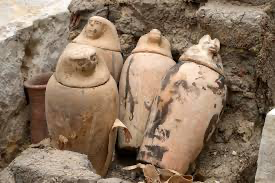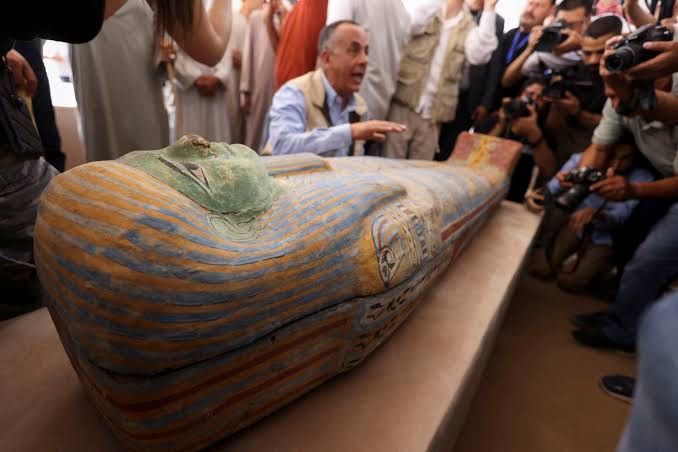Pratiksha Shome
At the Saqqara necropolis west of Cairo, archaeologists have uncovered ancient mummification studios and two tombs that date back to as early as 30 BCE. Saqqara is a portion of Memphis, the nation’s historic centre and a UNESCO World Heritage site.
According to Mostafa Waziri, secretary-general of Egypt’s Supreme Council of Antiquities, in his remarks to the press, the workshops contained stone beds, clay pots, natron salt, resin material, linen gowns used in the mummification process for people and sacred animals, as well as ritual vessels. The artefacts, according to Waziri, are from the Ptolemaic period (305–30 BCE) and the 30th Pharaonic Dynasty (380–343 BCE). A vibrant sarcophagus was also unveiled by him.
The graves were for Ne Hesut Ba, a senior official from the Old Kingdom’s fifth dynasty, and Men Kheber, a priest from the New Kingdom’s 18th dynasty, according to Sabri Farag, director of the Saqqara archaeological site.
According to officials, Men Kheber’s tomb was carved with “scenes showing the deceased in different positions,” while Ne Hesut Ba’s tomb contained inscriptions depicting farming, hunting, and other daily activities.

Courtesy: ARTnews
According to Reuters, the archaeological find was made following a year-long dig close to the Bastet sanctuary, which is where the catacombs of mummified cats are located in Saqqara, about 19 miles south of Cairo. The refuge is the same place where dozens of statues and hundreds of mummified animals were found in 2019.
Since 1975, the National Museum of Antiquities has been conducting excavations at Saqqara, but recently, the region has been a particularly prolific source of notable discoveries. Five painted tombs, a tomb of an ancient dignitary, and a sarcophagus that belonged to King Ramses II’s treasury were all discovered by Egyptian researchers in 2022. They discovered a 3,200-year-old elite necropolis, a 52-foot-long undamaged papyrus from 50 BCE, and the oldest known mummy in the nation earlier this year.
A large portion of these artefacts will be on exhibit in The Grand Egyptian Museum, a cutting-edge 5.2 million square foot building set to open later this year close to the Giza Pyramids on the outskirts of Cairo. It will store 100,000 antiquated objects in addition to all the valuables found in King Tutankhamun’s tomb.
Source: ARTnews





